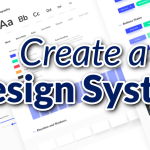AI-Driven Design Systems: Shaping User-Centric Experiences
- Post
- August 7, 2023
- Design Systems, UI/UX Design, Web Design
- 0 Comments
Artificial Intelligence (AI) has permeated every facet of our lives, and now it’s poised to revolutionize the realm of user-centric design. In this comprehensive exploration, we delve into the exciting domain of AI-driven design systems. From understanding the synergy between AI and design to exploring real-world examples and software solutions, this blog illuminates the path toward a new frontier in design.
Understanding AI’s Synergy with Design
The marriage of AI and design is a harmonious blend of creativity and intelligence. AI augments human creativity by processing vast datasets and predicting user preferences, enabling designers to craft experiences that resonate deeply. As we navigate through the intricacies of user behavior, AI offers insights that help tailor designs with unmatched precision.
The Evolution of Design Systems
Design systems have evolved from static style guides to dynamic frameworks that facilitate consistent design across digital platforms. AI takes this evolution a step further by automating design decisions based on established guidelines, ensuring cohesion and efficiency in every aspect of the user journey.
Examples of AI-Integrated Design Systems
Netflix: Personalized Thumbnails – Netflix employs AI to analyze user preferences and display personalized thumbnails, significantly enhancing content discovery.
Adobe Sensei: Creative Assistance – Adobe’s AI-powered assistant suggests design elements, streamlining the creative process and fostering innovation.
Sephora: Virtual Try-On – AI-driven virtual try-on experiences empower users to visualize products, bridging the gap between online shopping and in-store trials.
The Pinnacle of Personalization
AI-driven design systems excel at personalization, tailoring interfaces and content to individual user preferences. This level of customization not only enhances user satisfaction but also boosts engagement and conversion rates.
The Role of AI in Collaborative Design
Collaboration lies at the heart of effective design, and AI complements this dynamic by analyzing team interactions and suggesting design refinements. Designers can now focus on creative aspects while AI handles iterative improvements.
Navigating the Design Software Landscape
The landscape of design software is expanding rapidly, with numerous tools integrating AI capabilities. From automated prototyping to predictive layout suggestions, these software solutions empower designers to work smarter and faster.
Breaking Barriers with AI Accessibility
Voice Recognition – AI-powered voice commands enable designers with disabilities to navigate design software seamlessly.
Semantic Design – AI assists in generating designs based on semantic descriptions, making design accessible to those with limited graphical skills.
The Future: Ethical Considerations
As AI-driven design systems become more prevalent, ethical considerations emerge. Designers must strike a balance between automation and human creativity, ensuring that AI-driven designs align with ethical standards and human values.
Final Words
AI-driven design systems are poised to redefine the landscape of user-centric design. By harnessing AI’s capabilities, designers can create personalized, engaging, and accessible experiences that resonate deeply with users. The synergy between human creativity and AI intelligence holds the key to unlocking a new era of design possibilities.
Commonly Asked Questions
Q1: Can AI replace human designers entirely?
A1: AI complements human designers by automating routine tasks and offering insights. Human creativity and intuition remain integral to design.
Q2: How do AI-driven design systems handle cultural nuances?
A2: AI’s learning capabilities enable it to adapt to various cultural contexts, but human oversight is crucial to ensure sensitivity and relevance.
Q3: Are AI-driven designs always superior in user testing?
A3: While AI can optimize designs based on data, user testing provides valuable qualitative insights that AI may not fully grasp.
Q4: What skills are essential for designers working with AI-driven systems?
A4: Designers need a blend of creative thinking, data analysis, and a willingness to collaborate with AI to harness its potential fully.
Q5: How do AI-driven design systems impact job roles in design?
A5: AI augments designers’ roles by handling repetitive tasks, allowing designers to focus on strategic and creative aspects of the design process.




